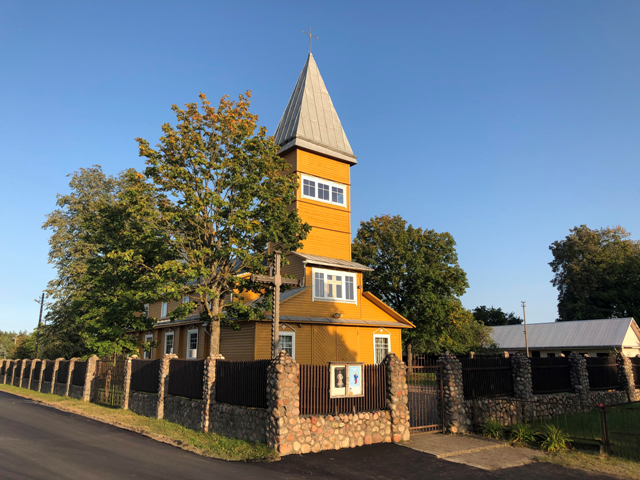Paluknys is an old linear village situated on the banks of the Lukna stream, from which the name of the area is believed to have originated.
In 1794, a chapel was built here. The owner of the Paluknys estate, Vilnius University professor Jonas Wolfgang, built a new wooden chapel in 1829. With government permission, Mykolas Sadovskis donated the family chapel of Paluknys, other buildings, and 2 tenths of land to the Vilnius Diocese in 1904. In 1905, a temporary church from Old Trakai was relocated here. The chapel was repaired and enlarged in 1906.
In 1921, a parish was established, and the Paluknys chapel became a church. In 1926, towers were added to the church. On August 25, 1941, the church burned down. During the fire, Kazimieras Packevičius (1884–1941), who had been the parish priest since 1915, perished. In 1943, a temporary church was built. In 1981, it was reconstructed: lengthened, widened,
and a tower was added. The church is rectangular in plan, basilican, with a single tower and a vestibule. The interior has 3 naves separated by pillars and features 3 altars.
St. John the Baptist Church, which is of an elongated rectangular plan with three naves, stands in the center of Paluknys, next to the abandoned Wolfgang family cemetery. In the churchyard, there are state-protected art monuments: two 18th-century chasubles and a wooden sculpture "Rūpintojėlis" (Pensive Christ). The Rūpintojėlis is dated to the second half of the 17th century and is considered the oldest sculpture of this iconographic type in Lithuania. The professionalism of the author suggests that the figure of the Pensive Christ might have been carved by a master connected to the Bernardine Monastery in Vilnius. The Bernardines of Vilnius owned a chapel in Paluknys, from which the sculpture likely came to the current church.





 Entertainment
Entertainment
 Food establishments
Food establishments





























 54.501924, 24.985427
54.501924, 24.985427
 Get directions
Get directions









